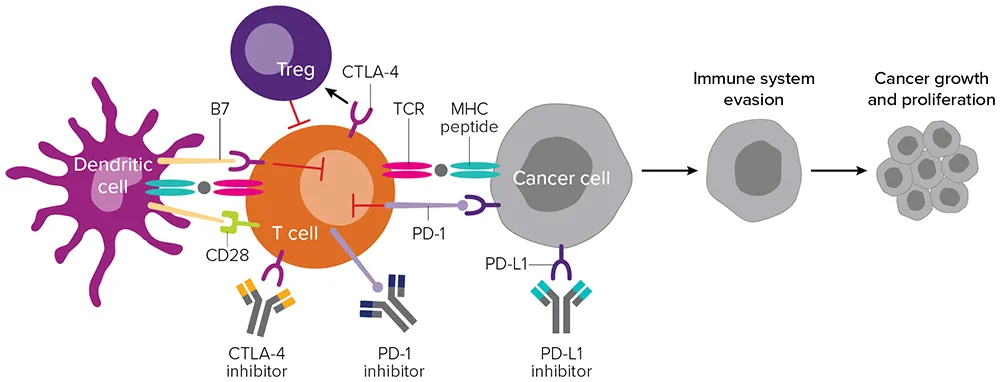Shedding light on functional markers
Learn more about what functional markers are and why they’re so important


Wanting to know how and why things work is a key part of being human
We pursue education, optimize our workplaces, tend to our homes, plan neighborhoods and cities and ask myriad questions throughout our lives, all in an effort to glean a better understanding of the world around us, which in turn enables us to make better-informed decisions about our own growth and development. This is also the case when it comes to cells: Knowing what different types of cells do is important for researchers to be able to prevent and manage disease, maintain health and develop effective and safe therapeutics.
Just as there are many kinds of cells, there are also many kinds of cellular functions, actions that range anywhere from moving substances across the cell membrane to cell division to migration to gene expression. To achieve deeper insights into a cell’s activity, researchers need to use powerful cytometric tools that can detect functional markers, which use cellular processes as identifiers.
Different functional markers provide different glimpses into cell activation and response:
- Produced by a broad range of cells, cytokines are small proteins that play a crucial role in cell signaling. They control the growth and activity of other immune and blood cells, help the immune system mount a defense when needed and aid in controlling inflammation.
- Interleukins are cytokines that act as signals between white blood cells. They play key roles in the activation and differentiation of immune cells, as well as proliferation, maturation, migration and adhesion; they also have pro- and anti-inflammatory properties.
- Chemokines are cytokines that induce the movement of cells, most notably white blood cells. They are important in the development and homeostasis of the immune system and are involved in protective and destructive immune and inflammatory responses.
- Transcription factors are proteins that play a role in the process of converting or transcribing DNA into RNA. They are key in regulating the expression of immune genes; this can potentially allow for their activity to be modulated for the treatment of immune-related diseases.
- Protein phosphorylation is a modification in which phosphate groups are added to specific amino acid residues on proteins. Many enzymes and receptors are activated or deactivated by phosphorylation events, making protein phosphorylation an important regulatory mechanism, particularly in cell communication. Analyzing the phosphorylation of different proteins can reveal cellular response to external stimuli such as cellular damage, cancer or drugs.
- Protein kinases are enzymes that regulate protein phosphorylation. They add phosphates to other molecules, providing a regulatory mechanism by activating or deactivating functions of proteins in many cellular processes.
More coverage
To better understand what’s going on in the cell, researchers are looking to functional markers and how best to assess them. Traditional flow cytometry, the default choice for many researchers, can ultimately only show us part of the cellular picture, since detecting the functional status of cells is extremely difficult using fluorescence techniques. Standard BioTools™ CyTOF® flow cytometry grants the ability to assess single cells with multiple functional markers, resulting in information about actions within a cell vs. merely its phenotype. Because CyTOF technology can measure a higher number of parameters simultaneously without signal interference, it reliably generates a high-parameter snapshot of phenotype and function for every cell and provides a comprehensive way to capture immune complexity, providing a much-needed layer of information to identify predictive biomarkers in an unconstrained manner
These assets have led to CyTOF flow cytometry’s adoption in scores of studies assessing functional markers. In one such instance, a group of researchers examined the execution of longitudinal flow cytometry clinical trials in highly remote settings. The team used an immunophenotyping CyTOF panel on biobanked cancer samples to develop a novel blood “immune signature” of cancer non-responsiveness that predicts failure to make a clinical response to checkpoint therapies targeting the PD-1/PD-L1 pathway. The group’s comprehensive immunophenotyping CyTOF panel achieved robust staining profiles for a diverse range of functional and phenotypic markers profiled concurrently within a single sample.
CyTOF flow cytometry can also provide clearer insights into functional markers that are more challenging to detect. Detecting cytokines poses a challenge, as they are difficult to analyze for a number of reasons: They have complex networks, possess short half-lives due to transient secretion processes and exhibit very localized signaling. CyTOF technology has been shown to detect interleukins with superior resolution compared with fluorescence flow cytometry. A group of researchers used CyTOF XT™ to detect Th2 cytokines IL-5, IL-10 and IL-13; results showed that data collected on the CyTOF XT mass cytometer had superior resolution for intracellular readouts for said cytokines. In addition, when accurate clustering was enabled by better signal/noise, CyTOF flow cytometry datasets delineated a higher number of immune cell clusters with distinct functional signatures compared with a full spectrum flow cytometer.
CyTOF technology can help researchers identify novel disease drivers, detect more functionally diverse cell populations and design better therapies, all while using single tube of limited sample and a simplified workflow without spectral and stability challenges.
